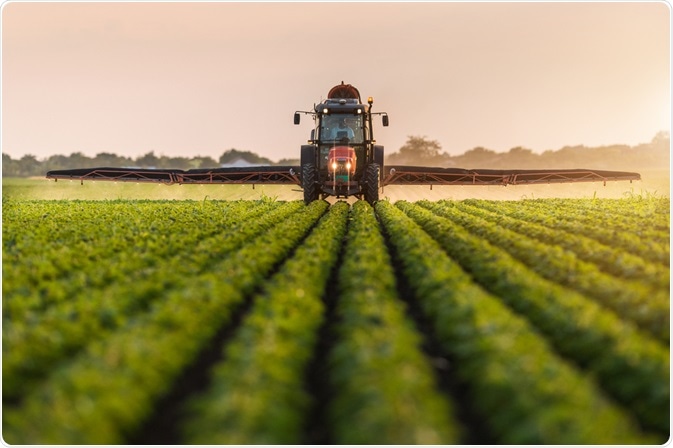The use of pesticides in agricultural production has improved yields by protecting plants from pests and diseases, such as microbial infection or insect infestation. However, for the final agricultural product, there are strict regulations for maximum residue levels (MRL) of pesticides, since many are carcinogenic or toxic compounds for humans.
Scientists from Chile and the USA have demonstrated a method to test food products for several common pesticides by ultra-high-performance liquid chromatography coupled to an orbitrap mass spectrometry detector (UHPLC-Orbitrap MS). They used a validated sample preparation method and showed that the accuracy of their UHPLC-MS method is compliant with EU regulations.
The scientists suggest their method for routine analyzes and underline its importance by revealing the presence of various pesticides in frozen food samples purchased from local supermarkets.
This research has been published in the journal Food Chemistry.
Skip to:
 Image Credit: Fotokostic / Shutterstock.com
Image Credit: Fotokostic / Shutterstock.com
Pesticides are widely used in industrial agriculture, as they are useful for crop protection. Since they degrade over time through UV exposure or environmental degradation, the efficient use of pesticides requires that they are sprayed on crops multiple times within the growing season.
Beyond environmental concerns voiced in the past due to excessive use, this also implies the risk that pesticides are carried over into the final food product, and that consumers might get exposed to these pesticides.
In order to ensure long-term safety for the consumption of pesticide-treated foods, countries have imposed regulations on maximum residue levels (MRL) to ensure that the accumulated consumption of residual pesticides by humans does not cause any harm.
Common methods to test foods for pesticides include gas chromatography coupled to mass spectrometry (GC-MS), which is particularly useful for the analysis of volatile and hydrophobic compounds though it requires chemical modification (derivatization) of samples in some cases to convert a compound into its volatile derivative.
With the increasing use of liquid chromatography (LC) coupled to mass spectrometry detectors (MS) for food analysis, scientists from Chile and the USA, led by Professor Carolina Torres, have now demonstrated a UHPLC-MS technique to quantify common pesticides in food and showed that this method is compliant with official regulations.
Pesticide Extraction and Quantification
The scientists developed a method for the separation and analysis of 7 common pesticides by UHPLC-MS and applied this method to 237 frozen food samples which they had purchased in Chile from different supermarkets.
The food samples were ground and subjected to solid-phase extraction (SPE) by a commercial SPE-kit, which allowed extraction of the pesticides within less than one hour. In the subsequent reversed-phase UHPLC separation, all 7 pesticides were separated and measured within 10 minutes run-time.
As the scientists noted, the procedure of sample preparation for UHPLC was in accordance with the validated method published by the Association of Official Analytical Chemists International (AOAC; Official Method 2007.01).
Pesticides Detectable in Almost all Food Samples
The investigators detected pesticides in more than 95 % of the food samples they had analyzed. While the presence of residual pesticides itself is not necessarily a concern, almost 9 % of the food samples also contained pesticides above the permitted maximum residue level (MRL). Thus, the scientists gave a clear demonstration of the importance of accurate, routine pesticide-screening methods.
For validated analysis, analytical techniques need to comply with official regulations, and the investigators validated their method against the European Union SANCO guidelines. As they report in their publication, their UHPLC-MS method achieved a relative standard deviation (RSD) of < 7.2% for repeated separations on the same day (permitted < 20%) and < 1.1% across different days (permitted < 25%).
In addition, the analyte recovery during test optimization was in the range 70-120% in all cases, in compliance with the SANCO guidelines. Thus, the authors suggest their method as a suitable laboratory test for routine analysis of food products, to ensure that foods offered for consumption do not contain pesticides beyond the permitted MRL.
Source
Concha-Meyer A et al., Pesticide residues quantification in frozen fruit and vegetables in Chilean domestic market using QuEChERS extraction with ultra-high-performance liquid chromatography electrospray ionization Orbitrap mass spectrometry. Food Chemistry 2019, 295, 64-71; DOI: 10.1016/j.foodchem.2019.05.046.
Last Updated: Nov 5, 2019